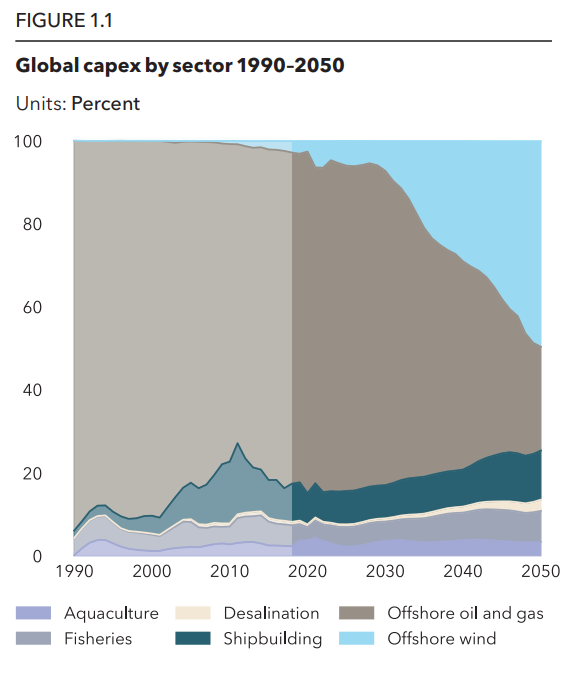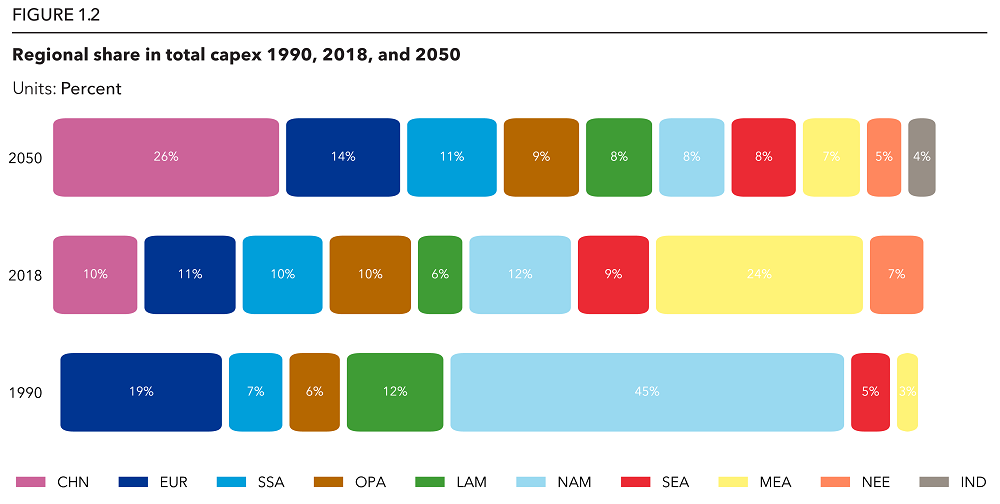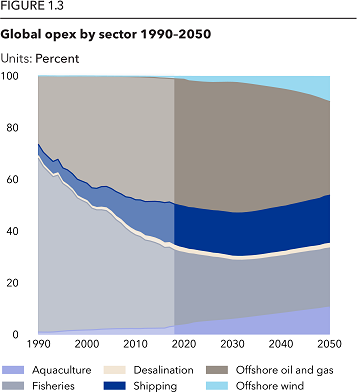We measure the development in the Blue Economy with capital and operating expenditure (capex and opex) and employment for the ocean industries.
1. Capex in the Blue Economy will be reduced from USD 517 billion in 2018 to USD 461 billion in 2050.
The cumulative capex in the period will be close to USD 20 trillion with major shifts in what sectors capex will be directed to as offshore oil and gas declines.

Currently, 80% of ocean capex comes from the oil and gas industry, with a negligible amount spent by offshore wind.
By 2050 the picture is radically different with offshore wind accounting for 50% of capex, and oil and gas will have shrunk to 25%.
In the same period, aquaculture will increase its share by half to 3.4%, and desalination will triple to 2.7% of total capex in 2050.
2. A geographical shift in global capex will take place in the coming decades.
Greater China will experience steady growth from the current level of 10% of global capex to 26% in 2050 and take a dominant position in the Blue Economy.
Europe will maintain a strong position growing from 11% to 14% in the same period.
Yearly capex declines in the Middle East and North Africa, in line with reduced fossil-fuel demand.

3. Opex will increase from USD 668 billion in 2018 to USD 793 billion in 2050 with similar shifts between sectors as seen for capex.
Offshore wind currently represents less than 1% of global opex, but reaches almost 10% in 2050, compared to a 50% share of total capex, while offshore oil and gas declines from 48% to 36% by 2050.
Aquaculture will more than triple in the same period to 10.5%.
Opex in the Middle East and North Africa declines significantly due to the effects of the energy transition and a declining offshore oil and gas market.
The increased activity in aquaculture and offshore wind will generate new employment and see strong growth. Starting from a low level of employment in 2018, 250 times as many people will work in offshore wind in 2050. Marine aquaculture will employ more people by then compared to now.
